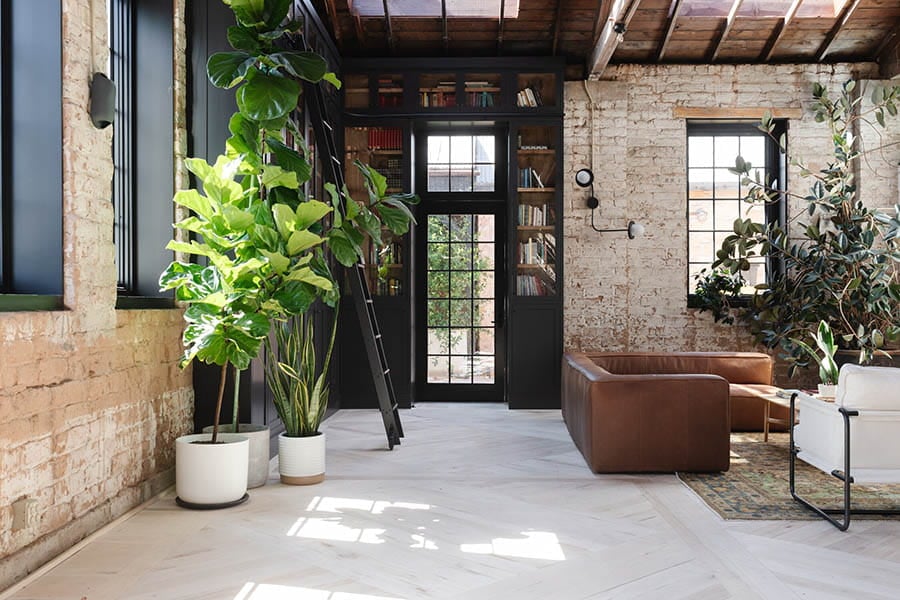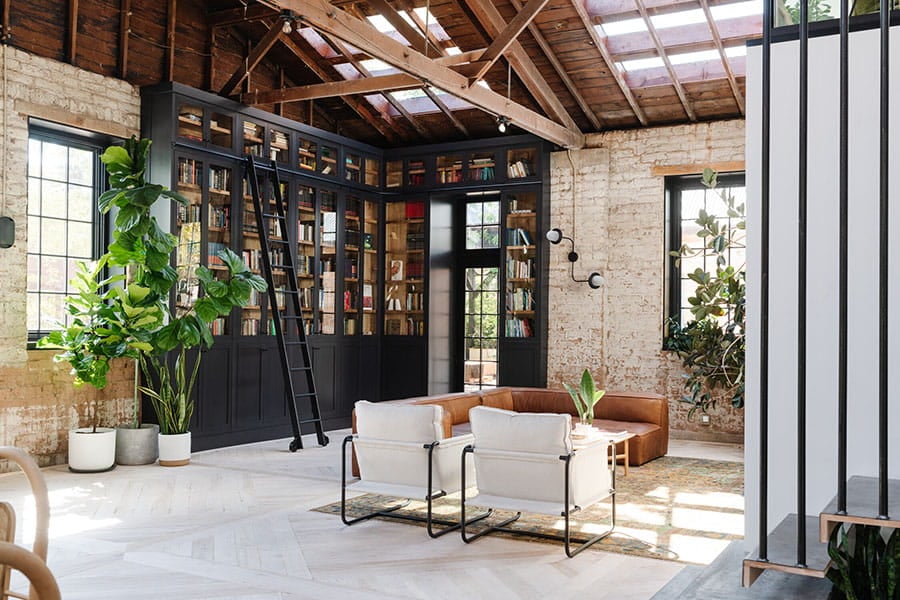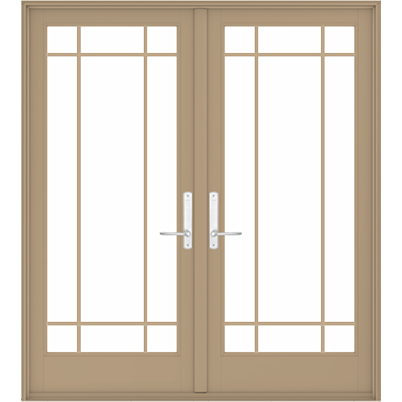Ideas
Creating a quiet home on a busy street

If Vintage Revivals founder Mandi Gubler has said it once, she’s said it a million times: “One of our biggest frustrations with [our home] is the road it’s on — more specifically, the noise.” Gubler’s new home is one of the most historically significant buildings in her hometown of Santa Clara, Utah. Lovingly referred to as the “Merc,” the Santa Clara Mercantile Co. was built in 1928 as a supply and gas station, providing a much-needed pit stop for travelers on their way westward. For the next 88 years, the Merc served as a warehouse, grocery store and post office, and it was set to become an art gallery before the fearless DIYer made the purchase of her dreams. “When I first walked in, I could immediately see how it could become the perfect home for our family,” Gubler recalled.
Home renovations always come with their share of challenges but converting a nearly 100-year-old commercial space into a family home comes with extra quirks. “Zoning was the first thing I wondered about,” said Gubler. The Merc is zoned as Commercial Mix Use, meaning it can be a residence if part of the building is a commercial business. The next challenge: property lines. With three young kids, Gubler and her husband, Court, wanted to make sure they’d have a yard to enjoy. A long, narrow property line will make for unique green space, but it’s a hurdle they’re looking forward to jumping.
“One of our biggest frustrations with [our home] is the road it’s on — more specifically, the noise.”
Mandi Gubler

Going from historic, single-pane windows to brand-new A-Series windows helped muffle outside noise.
While noisy neighbors or environments can just seem annoying, there’s growing evidence linking noise with effects like sleep disturbance1, increased stress2 and even high blood pressure3. Ulcers4 have also been linked to chronic noise exposure. Among industry pros, noise control is increasingly considered a green building tenet. That’s where smart sound abatement through architecture and materials comes in, including Andersen® A-Series windows, which have the option for triple-pane glass to further improve efficiency and noise reduction. A high-quality window can help improve interior acoustics as well, making music and movies sound crisp and conversations less apt to travel.
“[the Merc] feels like a giant blanket.”
Mandi Gubler

Natural light abounds in the main living area thanks to a combination of casements and an all-glass A-Series hinged patio door with colonial grilles and a matching transom window above.
“It was very important to me to match the original style of the windows at the Merc,” said Gubler. She chose Andersen for its customization options, sound abatement, ease of shopping and energy efficiency. While sifting through options, Gubler selected A-Series windows with Full Divided Light (FDL), where grille patterns are applied to both sides of the window. She also opted for an upgrade that’s available with FDL, called an Energy Spacer, which is a narrow bar that fills in the space between the two panes of glass and aligns with the grilles giving the appearance that the glass is divided. This upgrade complements the look of the grilles, while also minimizing the transfer of heat and cold, allowing Gubler to save on energy during Utah’s extreme summers. “It’s really cool technology and looks great,” she said.
At the Merc, each type of window has a purpose. Fixed windows (which don’t open) are perfect for flooding the space with natural light, primarily in the mud room and laundry room. Casement windows, which open similarly to doors, with a hinge on one side and latch on the other, open to the backyard and bring fresh breezes into the building. Gubler chose double-hung windows for the east-facing bedrooms. With the option to open these windows from both the top and bottom, double-hungs offer the opportunity to bring fresh air into the bedrooms.
With upgrades like insulation and high-quality windows, Gubler said, “[the Merc] feels like a giant blanket.” It was important to make such an industrial space feel cozy. She encourages other renovators to think about windows first, as they’re an often-overlooked detail that make a major impact in creating a happy, healthy space.
Footnotes:
1Environmental Noise and the Cardiovascular System.
2Environmental Noise and the Cardiovascular System.
3Environmental Noise and the Cardiovascular System.
4Cumulative Exposure to Nighttime Environmental Noise and the Cardiovascular System.


